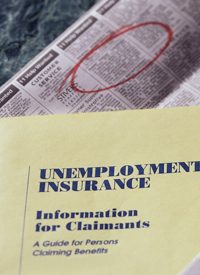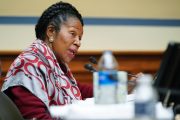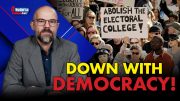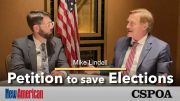
That same day, payrolls processor ADP gave its report on jobs, which indicated that private companies added only 38,000 jobs in May. This was far lower than most economists expected, who in aggregate had estimated job growth at 175,000. Many of those economists scrambled to “adjust” downward their expectations for the Bureau of Labor Statistics report due today. For instance:
Ian Shepherdson, chief U.S. economist with High Frequency Economics, cut his estimate of jobs from 175,000 to 75,000.
Diane Swonk, chief economist of Mesirow Financial, predicted Friday’s report would show a gain of 190,000 jobs created in May. She reduced her expectations to below 100,000.
Robert Dye, senior economist with PNC Financial Services, was more colorful: “The ADP Employment report coughed up a hairball in May.”
Noting that this number is the lowest since September, Jennifer Lee, senior economist with BMP Capital Markets, said, “No matter what, this is obviously a very, very weak result. Employers are still hiring but they’re reluctant to pick up the pace until they’re convinced the recovery is self-sustaining.”
The economic team at Merrill Lynch said, “We have no choice but to revise down our payroll estimate” from 165,000 to 125,000 new jobs in May.
The ADP report coincided with one from outplacement consulting firm Challenger, Gray & Christmas which showed that the pace of planned job cuts by private companies increased in May to 37,135, a 1.8-percent increase from April. And this report came on the heels of the Labor Department’s report that 424,000 Americans filed for first-time unemployment benefits in the third week in May, exceeding economists’ estimates of 400,000 claims.
All of this is being borne out by measures of consumer confidence, which also are declining. The Conference Board saw its Index of Consumer Attitudes drop from 66.0 in April to 60.8 in May, and its Expectations Index tumble from 83.2 in April to 75.2 in May.
And the housing market continues to decline as well, with the Mortgage Bankers Association reporting that its index of mortgage application activity fell 4 percent in the last week in May.
All of this comes as the Federal Reserve’s program of buying government debt, called Quantitative Easing II, ends in early June, with little expectation that it will be followed by any additional “stimulus.” In fact, the Fed is giving clear signals that they’ve done all they can, and not to expect anything more from them. In a strong indication of a change in direction, Cleveland Fed President Sandra Pianalto said that high employment is not a “quickly resolvable problem .… We’ve got a long way to go before labor markets can be described as healthy again.” Putting the best possible face on it, Pianalto said it could take another five years for the jobless rate to fall to its “normal” level of 5.5 to 6 percent. Fed Chairman Ben Bernanke put a lid on the discussion at his press conference in April when he commented,
While it is very, very important to help the economy create jobs and help to support the recovery, I think every central banker understands that keeping inflation low is absolutely essential to a successful economy, and we will do what we can to make sure that happens.
[However] the trade-offs are getting harder at this point. Inflation is getting higher. It’s not clear that we can get substantial improvement in payrolls [without increasing the risk of inflation].
All of which is making President Obama increasingly nervous about keeping his job in 2012. As Binyamin Appelbaum, writing for the New York Times, noted, “No American president since Franklin Delano Roosevelt has won a second term in office when the unemployment rate on Election Day topped 7.2 percent.” With unemployment at nine percent (according to the Department of Labor — real unemployment is likely twice that) and moving in the other direction, that is making it one steep hill to climb for the President to secure a second term. Coupled with softness in manufacturing, auto sales, and housing, and Bernanke’s insistence that he’s done with trying to stimulate the economy further, Obama is on his own.
Add the unemployment situation to consumer sentiment, and Obama may just find himself in a box he can’t get out of. Forrest Jones, of MoneyNews.com, noted that poor consumer sentiment numbers sank the reelection hopes of Jimmy Carter in 1979, and George H. W. Bush in 1991. Consumer sentiment “serves as a weather vane for the economy … and for politicians,” quoting Steve Blitz, an economist at ITG Investment Research. In May, 1979, sentiment numbers during Carter’s reelection campaign were 96.0, and in May of 1991 those numbers during Bush’s reelection efforts were 76.4. Today the Conference Board’s consumer sentiment index stands at just 60.8, down from 66.0 in April.
The only way for those numbers to change in Obama’s favor is for the President to do the one thing he refuses to do: cut government spending significantly, and eliminate vast arrays of regulations that impede business expansion. As noted by this writer in The New American,
If the economy had been allowed to heal itself without all the anti-capitalist “attempts to revive” it, there is little doubt that these numbers and outlooks would be vastly different. But because Keynesian and interventionist ideology rules the day, the patient continues to be prodded, injected, manipulated, and “stimulated,” all of which is guaranteed to extend the recovery and the pain.
It just may also guarantee that President Obama serves but a single term.



